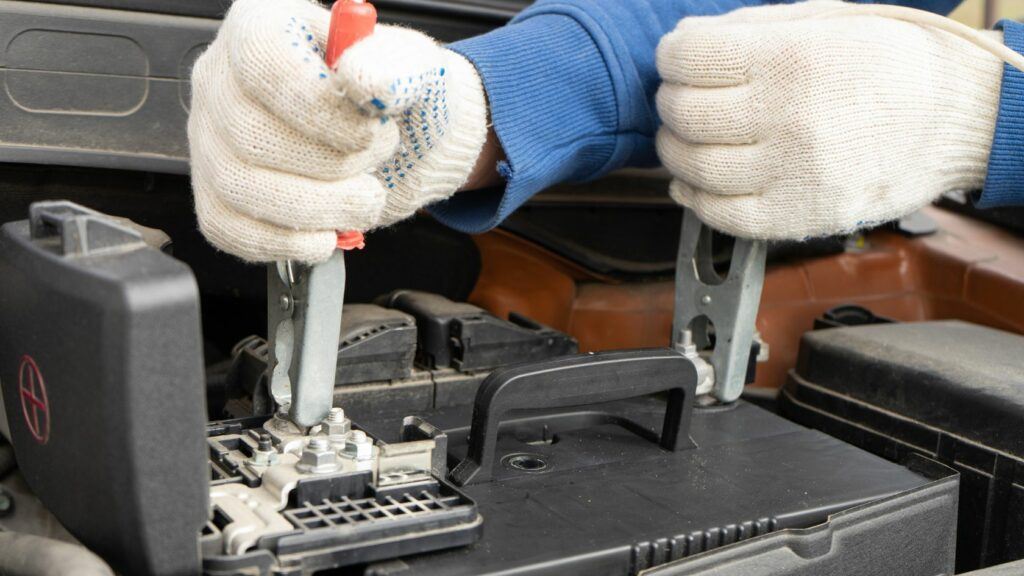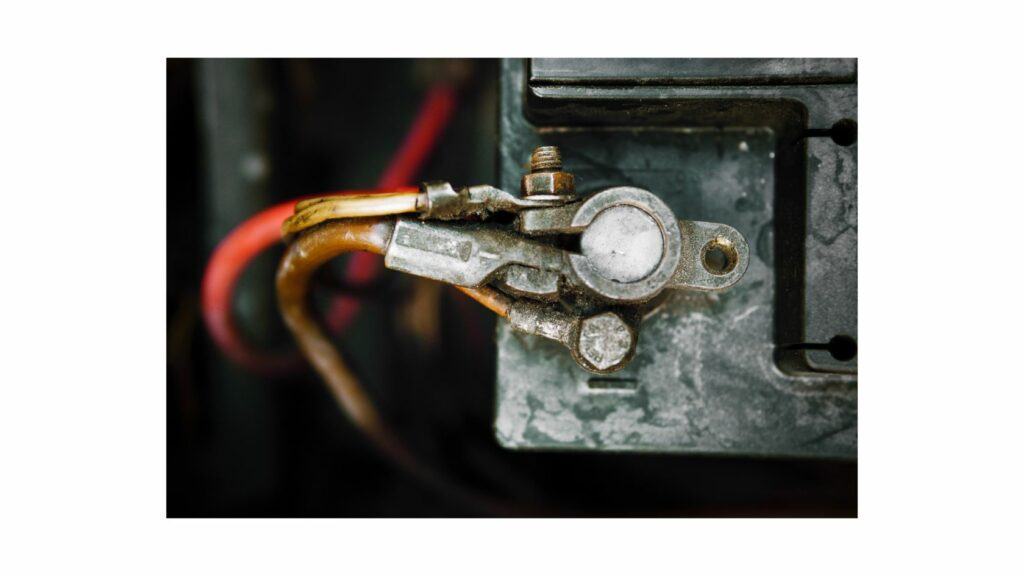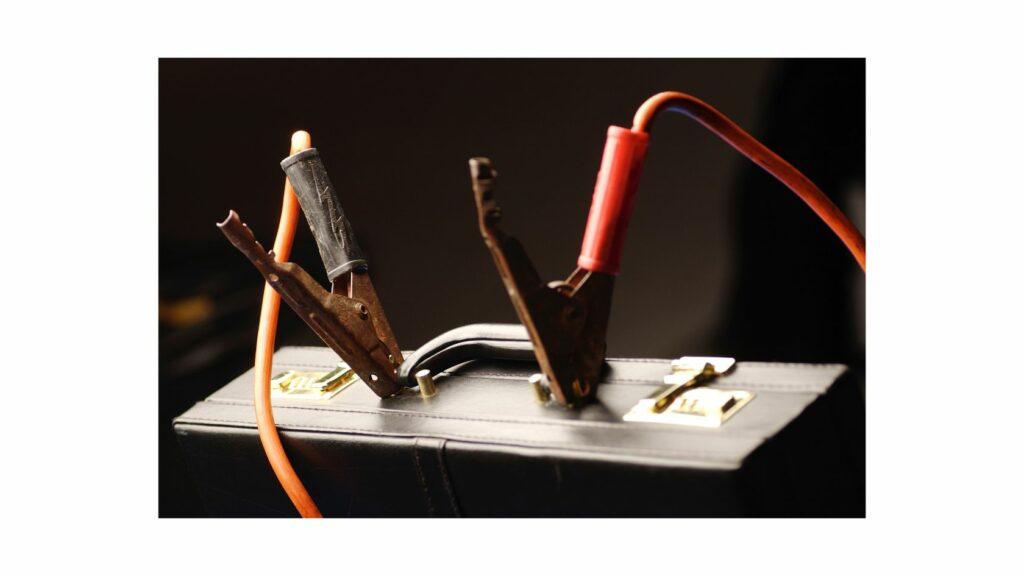
So, what does it mean when jumper cables catch fire? Have you been at the receiving end lately? Is the cable, battery, or both responsible for the firing mess?
Jumper cable catching fire isn’t a rare scenario. In fact, it is pretty common to see mild sparks whenever you try to jump-start a vehicle.
The intensity of sparks increases with various factors that can lead jumper cables to get hot, melt, and even catch fire in some cases.
Causes of jumper cables fire and their preventions are what you will find in this post so, keep reading!
What does it mean when jumper cables catch fire?
Jumper cable fire is often related to the condition of the battery you are trying to jump-start. A battery that is severely damaged, or corroded releases flammable and explosive elements that can lead to a jumper cable fire.
Some of the other reasons attributed to jumper cable fire are wrong connections, overloading, unbalanced battery combinations, and inferior quality of wires.
Jumper cable catching fire does not necessarily mean the whole vehicle catching fire but, yes it can lead to serious consequences on other related parts dependent on the battery.
Notwithstanding the fact and importance of jumper cables, it becomes vital to understand the circumstances of jump-starting a vehicle especially if you are new to the process.
Damaged battery
A battery that is extensively damaged in the sense already completed its lifespan or aggressively used without maintenance itself is a risky object from jump-starting perspective.
The elements contained by car batteries have the potential to ignite fire as soon as it comes in contact with another electrical conductor. In this case, the jumper cables cause immediate sparks when connected to a weak battery.
Sulfuric acid is a steamy vapor released by car batteries through vents that converts into flames due to jumper cable connection sparks. It is therefore important to keep the battery well-maintained.
Car batteries take charging power from an alternator to keep all the electrical components of a car active. This does not mean getting complacent and always leaving the accessories and other parts ‘on’ when turning off the engine.
Such an act is a major cause of concern for premature exhaustion of car batteries. In the absence of proper maintenance, the condition of such batteries worsen and does not favor recharging.
An attempt to jump-start your vehicle under these circumstances could be risky and may further damage the battery and its associated components as well.
A replacement could be a better option so, instead of attempting a jump-start process it is better to get your car battery inspected by professionals and follow their advice.
Corroded battery terminals
Corrosion on battery terminals is dangerous not only for the battery itself but also for the jumper cables.
There is no denying the fact that corroded battery terminals could potentially cause jumper cables to catch fire. This is because long-term corrosion or thick dirt could interrupt the current flow between the battery and cable wires.

When the passing of current is impeded it could lead to dangerous sparks damaging the battery and other parts of the vehicle. Hence, proper cleaning of battery terminals is necessary before applying jumper cable connections.
Heavily overloaded jumper cables
Jumper cables come in various sizes and power-resistant capabilities and as against the myth, all of them are not the same.
Overloading of a jumper cable scenario is possible and evident if you use bare jumper cables with lower gauge/amps on a larger battery.
Vehicle owners who hardly faced bad battery situations may unknowingly create an overloading scenario.
A small-size hatchback and a big SUV may not have the same voltage batteries. So, if a 12 volts battery is connected with a 24 volts battery (as an example) that too on a set of weaker jumper cables it can create a fiery situation.
A short circuit is bound to happen that can damage the overall structure of jumper cables. This can result in overheating, melting and finally smoking of jumper cables.
It is always important to know the process of jump-starting not only in terms of steps but also the capacity of batteries and jumper cable charging limitations.
Inferior quality jumper cables
Inferior quality jumper cables are always risky and vulnerable to catching fire quickly. Solid copper metal should be part of every jumper cable to conduct electricity efficiently.
Another factor is the thickness of wires which are also called gauge. An average of 4-6 gauges should be conducive to handling the transferring voltage pressure.
Jumper cables should also be powerful insulators. The insulation capacity should match the thickness of wires as well as clamps/handles that ensure flexibility, durability, and functionality.

When jumper cables fall short on any of the above qualities, the chances of sparks and fire increase significantly. This is due to their inability to take the load and handle amps while transmitting the power between two batteries.
It is imperative to research and take proper guidance before purchasing a final product. Cheaply valued cables can lead to long-term expenses on battery replacement and vehicle repairs.
Secondly, inferiority is not limited to a new set of cables. Storage and maintenance are two other factors that contribute to the weakening and damage of all types of jumper cables (old or new).
Related Read: Are jumper cables for car batteries waterproof?
With time and usage jumper cables are prone to damage. Depending on the storage location and weather conditions, the metal portion of cables could catch rusting and corrosion. The clamps and insulators are vulnerable to wear and tear and could break if not taken care of.
If you find your jumper cables in helpless conditions it is better to replace them with new ones rather than using them for jump-starting which could be unsafe and hazardous.
Wrong connection or polarity
One of the common mistakes every type of car owner makes is the improper connection of jumper cables.
Regardless of the knowledge and experience, there are instances of cables and cars catching fire due to negligent positioning and connection of wires.
It is a simple human error that leads to dangerous consequences so in case you still don’t know how to position the cables while jump-starting here is a small video to follow:
Other than following the colors it is also necessary to match the signs (positive and negative). This should be evident just by looking at the battery posts and jumper cable clamps.
Always leave the last connection (negative signed clamp) grounded as this is the main cause for jumper cables catching fire owing to the hydrogen gases around the batteries.
I would recommend taking guidance and help from an experienced person who has already used jumper cables before to avoid wrong connection scenarios.
If there’s unassertiveness between both the vehicle owners a smart decision would be to tow your vehicle to the nearest garage or service center for jump-starting.
Can a car battery catch fire while charging?
A car battery catching fire while charging is a rare scenario considering modern-day car batteries are much safer but it is possible.
Some of the causes that can lead to a battery catching fire are overcharging, short circuits, or any other malfunctions in the electrical components of a car.
Jump-starting a car is also one of the main causes of battery fires due to the sparks and improper handling of jumper cables.
It is important to follow proper charging and jump-starting procedures and monitor the condition of the battery to reduce the risk of fire and explosions.
Can jumper cables melt?
Yes, jumper cables can melt for a variety of reasons. Wrong connections, reversed positioning, damaged cables, and weak condition of a battery can generate aggressive sparks in jumper cables which can lead to melting.
Secondly, jumper cables can melt if they are left connected for too long on a car battery or due to short circuits.
It is therefore recommended to follow safety guidelines and use jumper cables properly to prevent overheating and melting scenarios.
Final thoughts
Jumper cables catching fire means something is wrong with the quality of jumper cables or they are just not connected in the right position.
Secondly, the condition of the battery is very important to prevent jumper cables from catching fire. Highly corroded battery terminals and too much wear and tear are dangerous signs for jump-starting.
Thorough inspection and replacement of such batteries is a better option than jump-starting.
Ultimately, always buy a superior set of jumper cables and maintain their quality for long-time usage. Do not compromise their storage and more importantly learn the process of using them correctly.
We have seen the causes that lead to fire with jumper cables. I am sure by following the guidelines and methods from this post you will be able to avoid the damaging risks and prevent the jumper cables and car battery from sparks and fire.
